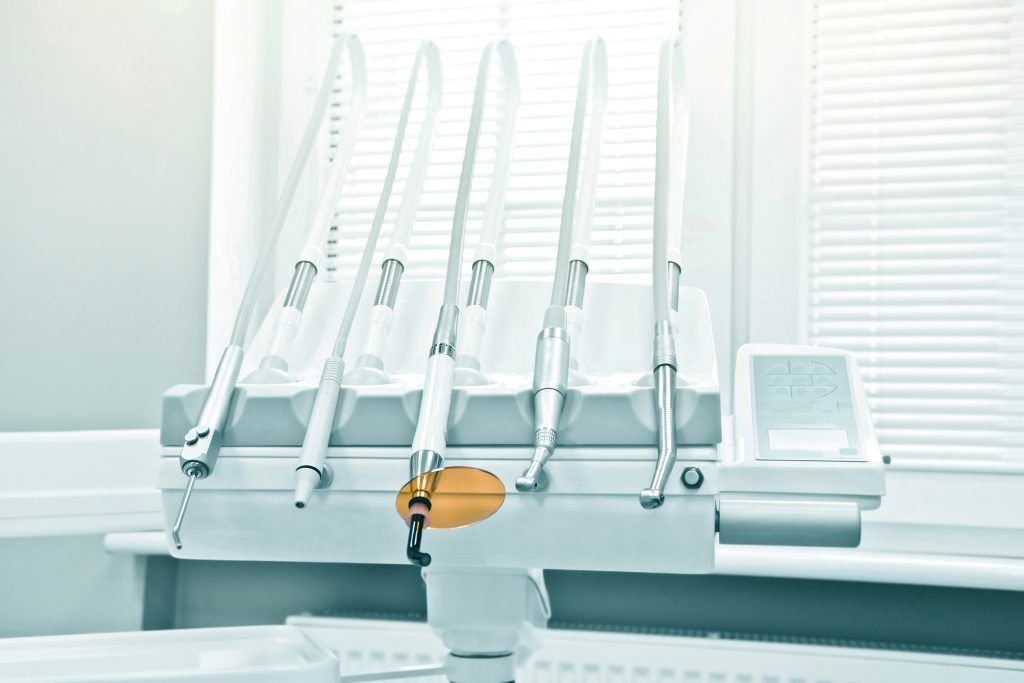NP DENTAL CLINIC
138/7 Thonglor 11, Sukhumvit 55, Wattana, Bangkok 10110 | Tel: +66-2-712-6622, +66-86-105-5252 | Email: info@narongpotiket.com
OUR EXPERTISE

Implants
For most people the loss of teeth is a traumatic experience which has profound effects on the quality of our lives. Dental Implants function, feel and look like natural teeth and can solve the problems associated with tooth loss.
Teeth have several major functions, most obviously they allow us to chew our food and give us an attractive smile. You may not be aware that they also play an important part in speech and help maintain our facial shape.
The loss of even one tooth can begin a process of degeneration which can lead to the need for artificial removable teeth. In the process, the gums that hold the teeth no longer have a function and begin to shrink, changing the shape of the face. This in turn leads to an appearance of premature aging.
Conventional dentistry has been successful in saving teeth, to the point where most of us now expect to keep our teeth for our whole lives. However, despite our best efforts there are situations where natural teeth cannot be saved or people have been without teeth for years. For these people, conventional dentistry is not always good enough.
Removable dentures can never be as good as the real thing and conventional bridge work involves drilling away healthy teeth to achieve the desired result.
Who can benefit?
Almost anybody who has lost one or more teeth can have dental implants . Even if you have lost all of your teeth we can now have you eating like you could never have imagined.What is a Dental Implant?
A dental implant is a small titanium screw which is placed in the gum. A crown can then be attached to the implant which looks and feels like a real tooth. For some people where a denture is acceptable, implants can be used to anchor the denture making it much more stable and eliminating the sore gums that many denture wearers experience.Is it safe?
There has now been over thirty years of research showing that implant treatment is both safe and reliable, even in medically compromised or elderly patients.Does it hurt?
This is the most commonly asked question about the procedure. The placement of the implant is carried out in the dental chair with conventional dental anaesthetic as used for fillings so you do not feel anything during the procedure. There may be some discomfort afterwards depending on the number of implants placed but mild pain tablets easily control this.With very few exceptions we find that most patients comment that the procedure was much easier than they expected.
Cosmetic Dentistry
Cosmetic Dentistry primarily offers a range of dental treatment options which significantly improves a patients appearance and therefore well-being. Cosmetic Dentistry can be considered an art as well as a science and the aim is to achieve the most harmonious, attractive and natural looking appearance possible.
All artists have their tools and it’s no different for dentists. There are a range of techniques to choose from to improve the appearance of your smile including Porcelain or Composite Veneers, Crowns, Implants, Tooth Whitening or Bleaching to name a few. Generally a combination of techniques are used to gain the best results.
Orthodontics
Orthodontic treatment, commonly known as braces, has become quite a popular and accessible treatment for many patients in an effort to correct crooked teeth or improve their smile.
Orthodontic treatment can involve the use of braces or plates or a combination of both. The best results can be achieved when children are growing in their teenage years.
Braces can also often provide a better alternative for adults wanting that perfect smile. In many cases, orthodontic correction is a crucial part of the combination of treatment for those who want to improve their overall dental condition.
Beginning treatment later in life may mean longer and more complicated treatment so it is always worthwhile just inquiring about the need for orthodontic treatment when seeing the dentist.
Crowns
A Crown describes a dental procedure where the whole of the tooth except the root is restored. Crowns are the strongest possible solution for damaged teeth and if done well, will function for much longer than a normal filling. They are made to look and feel like natural teeth.
Crowns are usually recommended when there is so much structural damage to a tooth that other filling techniques will not be adequate. This damage may be caused by decay, trauma, cracks or through wear and tear. A crown greatly strengthens the tooth and provides an improved aesthetic result.
Not all crowns are the same. Broadly speaking crowns can be classified into 3 main types
1. Full Metal – These are usually used on teeth that cannot be seen and where utmost strength is required. They can be made from different materials but we mostly use either cast gold alloy or milled titanium
2. Porcelain Bonded to Metal – These crowns are the most common in the dental industry and can be excellent for back teeth but are not used as often on front teeth these days.
3. Non-Metal – These crowns have a vastly superior appearance to conventional crowns. We are among the first dentists in Thailand to place all ceramic crowns. It is also our experience that non-metal crowns are more biocompatible than metal crowns and we will use these in most situations.
A word of warning…
Many dentists who place cheaper crowns use porcelain bonded to non-precious metal and often have them made overseas to save cost. We will never use these types of crowns as they are inferior in every way to the ones we place.
Porcelain Veneers
Porcelain veneers are able to significantly improve the appearance and colour of teeth which may be discoloured or chipped.
Veneers are a thin semi-transluscent “shells” of porcelain permanently bonded to your teeth. Being fabricated in a laboratory, they are extremely strong and wear resistant.
A minimal amount of tooth structure is removed to provide sufficient space for the porcelain to cover the tooth and a pleasant natural look is acheived with little or no discomfort.
If your teeth are suitable for porcelain veneers, it is highly desirable that your gums are healthy before treatment begins. This wil enable the dentist to get an accurate fit for the veneer at the gum line.
Inlays / Onlays
Inlays or Onlays are a type of tooth coloured filling which bond or “stick” to the tooth structure and strengthen the tooth.
Inlays and Onlays are recommended when a large area of the tooth requires a filling or when additional strength may be required for a filling.
They are fabricated in a laboratory out of either porcelain or a tooth coloured resin material and require two visits to complete treatment.
White Fillings
White fillings are almost always used these days instead of the traditional silver coloured amalgam fillings. Almost all patients prefer to have a white filling placed in their mouth primarily for aesthetic reasons.
The advantages of a white filling is that it is virtually identical to the natural tooth in colour and it actually bonds to the tooth structure which may also strengthen the tooth.
A white filling can be done in one visit and the materials used provide a more attractive way to treat tooth decay whilst strengthening your tooth.
Snoring
Did you know that over 80% of adults snore? Loud or frequent snoring does not only affect the quality of sleep for you and your partner, it may also be a sign of a more serious problem – Obstructive Sleep Apnea (OSA).
This is where the airway becomes blocked and breathing stops. The brain then detects the lack of oxygen and prompts a momentary arousal to draw breathe. Breathing may stop dozens even hundreds of times a night, with each stoppage lasting from 10 seconds to over a minute.
OSA is a serious medical condition that has been linked to excessive tiredness, memory problems, depression, reduced resistance to infection and increased risk of high blood pressure and heart disease.
The sleep apnea appliance treats snoring and OSA by moving the lower jaw forward slightly which in turn enlarges the airway to keep it open. The device is worn in the mouth at night and consists of upper and lower plates that are custom-made to fit over your teeth.
Tooth Whitening
At The Dental Practice, we use a combination of whitening treatments including in-office and whitening trays to ensure that the best possible results are achieved for our patients.
Generally, patients will find an improvement of 0.5 – 2 shades immediately, which gradually improves over the next 3 weeks. Individual results vary from patient to patient and will depend on your initial tooth colour, type of stain, oral hygiene habits and diet.
Typically, Tooth Whitening may last 12 -24 months. However with regular use of the home whitening kit, results can last for much longer. Other factors such as smoking, poor oral hygiene and diet can affect the longevity of the results.
Most people are candidates for Tooth Whitening, however, there are a few restrictions so you will need to have a consultation with the dentist before you can proceed.
Tooth Whitening is a safe procedure and does not affect the structure of the tooth or the enamel. It has been used in dentistry for many years. The procedure does not affect existing restorations and these will not change colour with the bleach so the dentist may recommend changing them to achieve the best results.
Root Canal Therapy
Root Canal Therapy is a procedure performed to treat and prevent pain and infection in decayed or traumatised teeth while keeping the tooth functioning in the mouth.
Root Canal Therapy is done in three stages;
Stage 1 – The canals of the tooth are located and negotiated to the root of the tooth.
Stage 2 – The canals are cleaned and shaped.
Stage 3 – A filling is placed inside the root of the tooth.
On average it may take anywhere from two to four visits to complete these stages.
Most of the time Root Canal Therapy is totally painless as the affected area will be numbed completely. Occasionally some discomfort occurs in the initial stages of treatment if the nerve tissue is very inflamed. If this is the case it will be treated with antibiotics and analgesics.
Once the Root Canal Therapy has been completed, the tooth is often left weak and prone to breaking. Depending on the amount of tooth structure left, we often recommend placement of a Crown to prevent any tooth loss in the future.
Bite Splints
A Bite Splint is an appliance which is worn at night to help alleviate the pressure placed on the teeth and jaw of patients who grind or clench their teeth. A Bite Splint assists in dealing with TMJ disorders as well as aids in the long term protection of teeth from wear and tear.
The TMJ or Temporomandibular Joint is the point where the jaw opens and closes. The symptoms of TMJ disorder can vary from patient to patient and may only be mild but can include headaches, migraines, neck and back pain, dizziness, popping or clicking jaw joints, earache or pain when opening and closing your jaw.
A Bite Splint is comfortable to wear and ensures that the teeth are separated from each other allowing the jaw muscles to relax and taking the pressure off individual teeth.
Hygiene / gum disease
We have a strong commitment to preventative dentistry. Prevention is by far better than the cure. Our hygienists manage our preventative and maintenance department within our practice and they will ensure that all of your present and ongoing treatment needs are always met.
